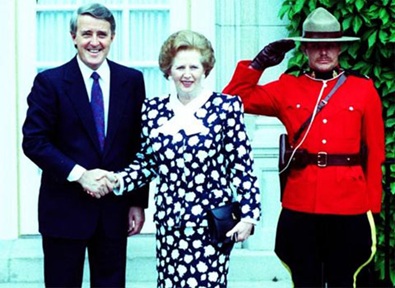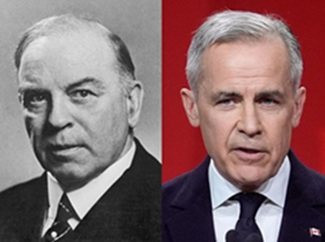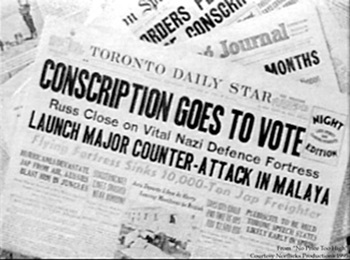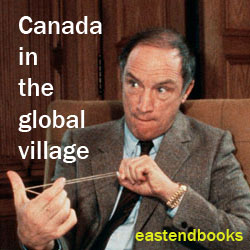Two days after the real 24th of May 2025 : three quick notes on the United States, Canada, and Alberta (and Quebec)
May 26th, 2025 | By Randall White | Category: In BriefRANDALL WHITE, NORTH AMERICAN NOTEBOOK, TORONTO. MONDAY, MAY 26, 2025. This is the last day of the Memorial Day long weekend in the USA.
Our version of something similar in Canada was last weekend. (We like to keep things a little different in Canada.) It is now celebrated as Victoria Day — “a federal statutory holiday, as well as a holiday in six of Canada’s ten provinces and all three of its territories.”
When all this began in the old “British North America” of the mid-19th century, Queen Victoria was the monarch and her birthday was May 24, 1819. Originally the holiday that was celebrated in various parts of what is now the Canadian confederation of 1867 was held on the exact day of May 24 . In the more practical recent past Victoria Day “ falls on the Monday between the 18th and the 24th (inclusive) and, so, is always the penultimate Monday of May.”
In an earlier era (which even those as old as I am know mostly from even older tales), “May 24” was popularly known as Firecracker Day, as in this celebrated rhyme : “The 24th of May/Is Firecracker Day/And if they don’t give us a holiday/We’ll all quit school.” (There are other slightly different versions : this is the one I learned from my mother long ago, I think.)
Personally I like the name Firecracker Day much better than Victoria Day. I see no good reason for celebrating the birthday of the old Queen Victoria (1819–1901) in 2025. But firecrackers are always worth celebrating (safely of course). And the main point of the late May holiday is that : “It is informally considered the start of the summer season in Canada.”
We did have public fireworks displays here in Toronto last Monday night. One took place not far from my house. (We could see at least the edges of the main bursts of colourful explosion from our second-floor balcony, as usual.)
Today, I want to celebrate the real 24th of May with three notes on current politics in the United States, Canada, and Alberta (and Quebec).
(1) Marc Elias : “It is only by stripping Republicans of power that we are going to have a real check on Donald Trump”
Marc Elias is “an American elections attorney for the Democratic Party. He founded Democracy Docket, a website focused on voting rights and election litigation in the United States, in 2020. He left his position as a partner at Perkins Coie to start the Elias Law Group in 2021.”
Just the day before May 24, 2025 Mr. Elias tweeted/Xposted : “It is only by stripping Republicans of power that we are going to have a real check on Donald Trump. If we have a Democratic House and a Democratic Senate, the world will look very different for democracy.”
This strikes me as right on the money. Almost four months into the second and much more appalling Trump administration, it is clear enough that there are very few honourable Republicans in the federal House or Senate in 2025 — prepared to vote against Trump’s recurrent violations of the norms and even fundamental laws of democracy in America. (As Republicans were prepared to do over Richard Nixon’s role in Watergate in the 1970s.)
As best as I can make out, this means that Democrats and all others who oppose the already increasingly anti-democratic, corrupt, incompetent, and wildly unrealistic second Trump administration in Washington, DC should right now start concentrating on the Democrat (or even just anti-Trump) ground game for the November 3, 2026 mid-term election. All “435 seats in the U.S. House of Representatives and 33 of the 100 seats in the U.S. Senate” will be contested. And this has to be the main focus of the struggle against Donald Trump in any near future.
(2) Mark Carney’s Mackenzie King
On May 21, 2025 the Global News national reporter Mackenzie Gray tweeted/Xposted : “After saying the old Canada-US relationship is over and that Trump wants to ‘break us so he can own us,’ I asked PMMC why he’s considering joining the US Golden Dome … He said ‘We are in a position now where we cooperate when necessary, but not necessarily cooperate.’”
On May 22 our own illustrious counterweights editors retweeted/reposted Mr. Gray’s message along with this Quote : “At last a prime minister of Canada in the 21st century who remembers ‘conscription if necessary, but not necessarily conscription‘ — and PM William Lyon Mackenzie King in the 20th century … all very Canadian.”
William Lyon Mackenzie King remains Canada’s longest serving federal prime minister (1921–1926, 1926–1930, 1935–1948). In a number of ways he was an appalling individual. As just one case in point, he was seriously out of step with the increasingly diverse and multicultural Canada that blossomed in the second half of the 20th century.
At the same time, Mackenzie King was prime minister for so long because he was a subtle, skilled, deft, and even gifted political operator, who understood a great deal about the challenges of the Canada of his day that had (as he complained in the 1930s) “too much geography.” (Something that remains true enough today.)
The 1940s quip about “conscription if necessary but not necessarily conscription” was Mackenzie King’s formula for dealing with a World War II military service proposal that was strongly opposed in Quebec, but broadly supported in the rest of Canada.
Now in the mid 2020s “cooperation if necessary, but not necessarily cooperation” does seem a sensible and effective policy for the Government of Canada in its dealings with the current US Administration in Washington. Was PM Carney’s grasp of the Mackenzie King political wisdom acquired during his work with the Bank of Canada? Whatever, it looks almost inspired in 2025!
(3) Alberta as an anglo disciple of le Quebec libre
I long ago wrote a book about Senate reform in Canada, and I learned a few things about the longstanding grievances of Western Canada, in a country that began historically in Eastern Canada. But the current talk about Alberta separatism strikes me as a much less impressive contribution to the future than the broadly constructive role Alberta played in the 1980s and early 1990s debate on Senate reform.
At the bottom of much Alberta separatist chatter in the 2020s, it seems to me, is some such proposition as : If Quebec has (de facto) special status in the Canadian confederation then Alberta wants it too. And on one view threatening separatism is one key way in which la belle province has achieved its current (de facto) special status.
Without figuring out my own views and opinions on all of this complex and contentious subject, it finally reminded me of a few paragraphs from the Epilogue of my almost completed book project, Children of the Global Village : Democracy in Canada Since 1497.

I offer in fact three such paragraphs here, as a form of Canadian-American entertainment on Memorial Day in the USA (with a special shout-out to those intrepid adventurers driving from Oregon back to Berkeley, with a small mob of excellent young human beings) :
“In the Canada-US “free trade” election of 1988 a majority of the electorate, Canada-wide, nonetheless voted for either the Liberals (32%) or New Democrats (20%). And both parties opposed what finally became the Canada-US ‘FTA’ (Free Trade Agreement), that Brian Mulroney’s Progressive Conservative government in Canada had negotiated with Ronald Reagan’s Republican government in the United States.
“In the 1988 Canadian election that was effectively a referendum on the proposed FTA, the Conservatives won a majority of the popular vote in only two provinces — Quebec (53%) and Alberta (52%). Elsewhere provincially the pro-FTA Conservative vote ranged from a high of 42% in Newfoundland to a low of 35% in BC.
“Thanks to the sometimes bizarre workings of Canada’s traditional Westminster electoral system (with three but no more parties actually winning seats in 1988), 43% of the vote Canada-wide was still enough to give the Mulroney Conservatives 169 seats, in a 295-member House where 148 seats was a bare majority. The Canada-US FTA became the law of both lands in 1989. And (not for the last time) the minority of the voters in Quebec and Alberta led the majority in the rest of Canada!”
Meanwhile, back in 2025 both Danielle Smith and Mark Carney grew up in Alberta.
I think it’s good at this point that someone who grew up in Alberta is prime minister of Canada.
It is also a sign of Canada’s recurrent great luck in surviving its often more-turbulent-than-we-want-to-know history that the prime minister right now is Mr. Carney and not Ms. Smith.








